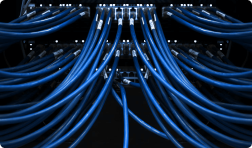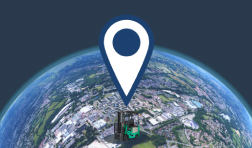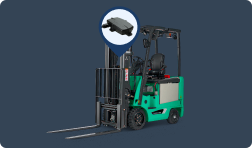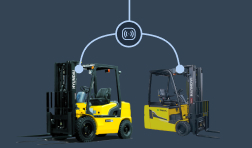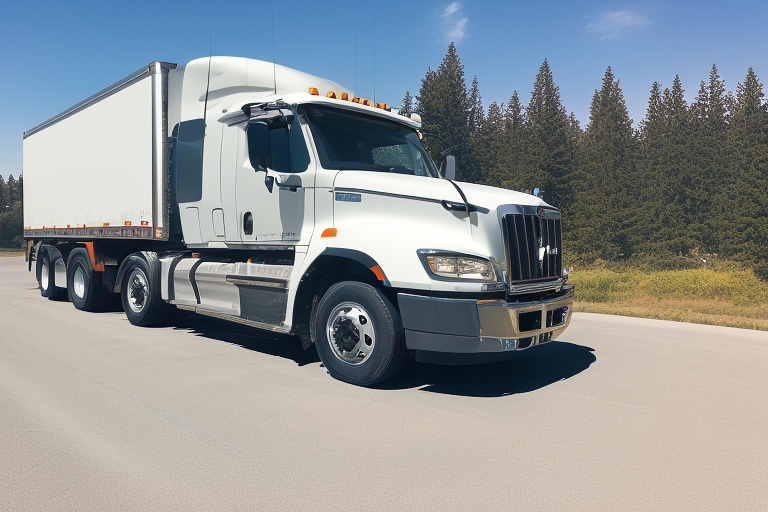Revolutionizing Fleet Management: The Power of IoT Telematics
Discover how the Internet of Things (IoT) is transforming fleet management, offering unprecedented efficiency and insights. With Clear Telematics, step into the future of real-time monitoring, predictive maintenance, and data-driven decision-making. Our robust IoT solutions integrate seamlessly with your existing fleet systems, providing durable, secure, and cost-effective management tools. From GPS tracking to equipment analytics, experience the evolution from traditional methods to IoT-enhanced operations. Embrace the IoT revolution and drive your fleet management into a new era of operational excellence.
Understanding IoT: Revolutionizing Telematics and Fleet Management
IoT refers to the network of physical objects — “things” — embedded with sensors, software, and other technologies for the purpose of connecting and exchanging data with other devices and systems over the internet. These devices range from ordinary household items to sophisticated industrial tools.
In fleet management, the core of these technologies are durable devices equipped with advanced GPS technology. These devices are designed to withstand the rigors of heavy equipment use, ensuring reliable performance in various conditions. Both wired and battery-powered options are available, catering to different needs and scenarios. The integration of high encryption security in these devices guarantees the safety and privacy of your data, a critical aspect in today’s digital age.
The power of IoT in fleet management lies in its ability to provide real-time, actionable insights. This technology enables fleet managers to track vehicle locations, monitor equipment health, and schedule maintenance – all in real time. By leveraging IoT, Clear Telematics offers a streamlined, cost-effective solution that focuses on the essential aspects of fleet management, without the added expense of superfluous features.
Learn more about how IoT is revolutionizing telematics and fleet management.
How IoT Fleet Management System Works: A Step-by-Step Overview
The IoT fleet management system operates through a streamlined process, ensuring efficient and effective management of your fleet. Here’s a breakdown of how it works:
- Collecting and Filtering Data: Our IoT devices, embedded in your fleet, continuously collect data on equipment location, usage, and condition. This data is essential for tracking and managing your fleet effectively.
- Data Transfer: The collected data is then transmitted securely, using cellular connections, to a central system. This transfer is facilitated by our high encryption security, ensuring that your data remains protected during transmission.
- Analytics Execution: Once the data reaches the central system, it undergoes thorough analytics execution. Our software analyzes this data, turning it into actionable insights. This step is crucial for understanding equipment utilization and maintenance needs.
- Action: The insights derived from the data analysis inform your decision-making process. Whether it’s scheduling maintenance, optimizing equipment utilization, or implementing theft prevention measures, the actionable data ensures that you can make informed decisions quickly and efficiently.
By leveraging these IoT technologies and processes, Clear Telematics provides a clear solution for managing your fleet, focusing on essential benefits like equipment tracking, maintenance scheduling, equipment utilization, and theft prevention and recovery.
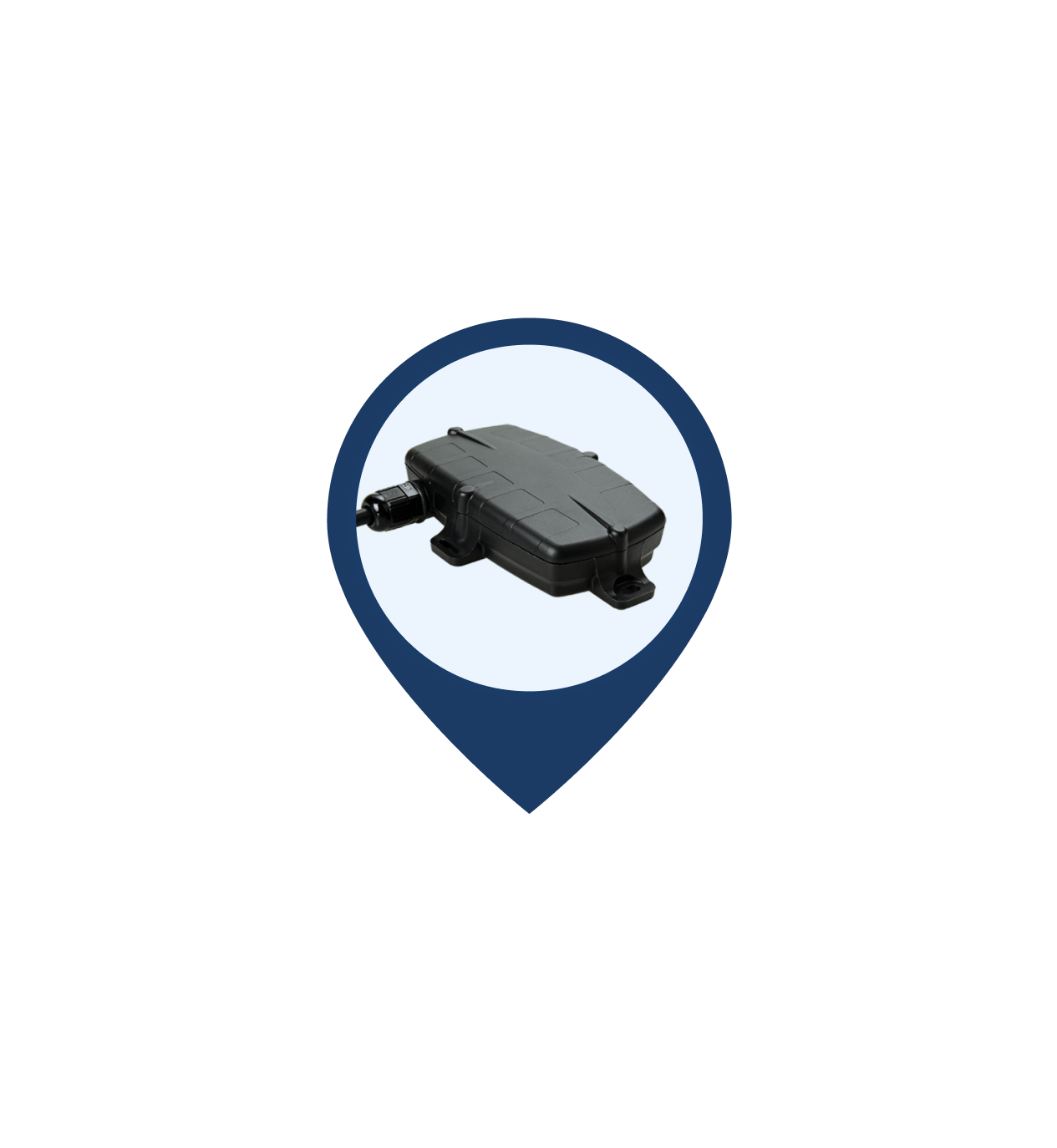
Is there a simpler way to manage your equipment?
Learn how Clear Telematics can benefit your business by scheduling a free phone meeting with one of our representatives.
IoT vs. Traditional Fleet Management: A Comparative Analysis
The Evolution from Traditional to IoT-Based Fleet Management
Traditional fleet management systems have served the industry for decades, relying on manual tracking, periodic maintenance schedules, and physical checks to manage fleet operations. However, the advent of IoT (Internet of Things) technology has revolutionized this field, introducing a new era of efficiency, accuracy, and cost-effectiveness.
In traditional systems, data collection is often sporadic and prone to human error, leading to gaps in information that can affect decision-making. Maintenance is scheduled based on time or mileage, which doesn’t always align with the actual condition of the equipment. This approach can lead to unnecessary maintenance or, conversely, unexpected breakdowns due to undetected issues.
IoT-Driven Fleet Management: A Leap Forward
IoT-based fleet management, on the other hand, harnesses the power of connected devices, advanced sensors, and real-time data analytics. This integration offers a clear and accurate view of fleet operations. IoT devices continuously monitor and report on various parameters such as location, equipment health, and usage patterns. This constant stream of data ensures that fleet managers have up-to-date information at their fingertips, enabling proactive and informed decision-making.
One of the most significant advantages of IoT over traditional methods is predictive maintenance. Unlike the scheduled maintenance of the past, IoT systems analyze equipment data to predict when maintenance is actually needed. This approach prevents unnecessary maintenance, reduces downtime, and extends the life of the equipment, leading to significant cost savings.
Enhanced Efficiency and Cost-Effectiveness
Efficiency is another area where IoT shines. Traditional fleet management often involves a lot of guesswork and estimation, but IoT provides precise data on equipment utilization, allowing for better allocation and optimization of resources. This precision not only improves operational efficiency but also contributes to a reduction in operational costs.
Furthermore, IoT technology offers superior theft prevention and recovery capabilities compared to traditional methods. Real-time tracking and alerts enable quick response to unauthorized use or movement of equipment, greatly increasing the chances of recovery in case of theft.
Conclusion: Embracing the Future with IoT
In conclusion, while traditional fleet management methods have their merits, the transition to IoT-based systems is a game-changer for the industry. The benefits of IoT in terms of data accuracy, predictive maintenance, operational efficiency, and cost-effectiveness make it a compelling choice for modern fleet management. As technology continues to advance, the gap between traditional and IoT-based systems will likely widen, making IoT the clear path forward for those looking to stay competitive in a rapidly evolving industry.
Read on to learn more how IoT solutions are becoming the essentials of fleet management.

IoT-Driven Data Analytics for Equipment Tracking
IoT-driven data analytics offers unprecedented insights into equipment usage and efficiency. Clear Telematics harnesses this power to provide you with detailed, actionable data. Our IoT devices collect and analyze information from your equipment, delivering essential insights directly to you. This data-driven approach enables you to make informed decisions about equipment utilization and maintenance.
Our focus on IoT-driven analytics means that you get more than just location tracking. You gain a thorough understanding of how your equipment is performing, which is crucial for scheduling maintenance and maximizing uptime. This approach not only saves time but also significantly reduces operational costs.
Clear Telematics’ IoT solutions are designed with durability and security in mind. Our devices are built to withstand the rigors of heavy equipment operation, and our high-encryption security ensures that your data is always protected.
Explore the benefits of IoT-driven data analytics for equipment tracking.
Real-Time Monitoring with IoT Technology
Real-time monitoring is a critical component of effective fleet management, and IoT technology is the key to unlocking its full potential. Clear Telematics offers IoT-enabled real-time monitoring solutions that provide you with up-to-the-minute information on your equipment. This immediate access to data is crucial for quick decision-making and efficient management of your fleet.
Our IoT technology enables not just tracking of location, but also monitoring of equipment usage. This real-time data is invaluable for preventing theft and recovering stolen equipment. It also plays a significant role in maintenance scheduling, ensuring that your equipment is always in top condition and ready for use.
By focusing on essential IoT features, Clear Telematics delivers a cost-effective solution for real-time monitoring. Our systems are designed to be user-friendly and easily integrate with your existing fleet management processes.
Discover the advantages of real-time monitoring with IoT technology.
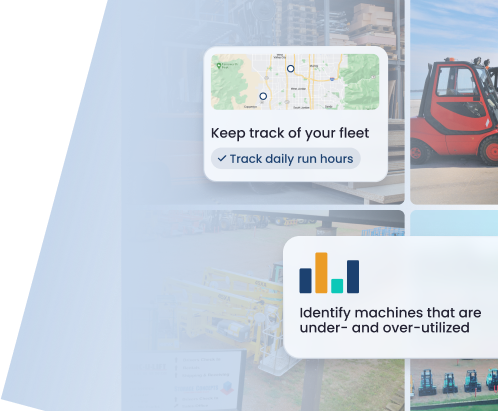
How it Works
As the owners of more than 1,500 industrial machines, we wanted one economical way to track all our equipment.
Designed for economy in the real world
One simple system for all your equipment
Sturdy hardware that fits any machine
Streamlining Operations with IoT-Enabled Telematics
Streamlining operations is a key benefit of implementing IoT-enabled telematics, and Clear Telematics is at the forefront of this innovation. Our IoT solutions are designed to make fleet management more efficient and cost-effective. By providing real-time data on equipment location and usage, our systems enable you to optimize your operations, ensuring that your equipment is used to its fullest potential.
Our focus on essential IoT features means that our systems are easy to use and integrate seamlessly with your existing operations. This ease of integration is crucial for maintaining a smooth workflow and minimizing disruptions. With Clear Telematics, you get a straightforward, effective solution for streamlining your operations.
The affordability of our IoT-enabled telematics systems makes them an ideal choice for equipment owners looking for a high-quality, cost-effective solution. We believe that you shouldn’t have to pay for features you don’t need, and our systems reflect this philosophy.
Find out how to streamline your operations with our IoT-enabled telematics.
Integrating IoT with Your Existing Fleet Systems
Integrating IoT technology with your existing fleet systems can seem daunting, but Clear Telematics makes it simple. Our IoT solutions are designed to be user-friendly and easily compatible with a wide range of fleet management systems. This ease of integration means that you can start benefiting from our IoT technology without the need for a complete overhaul of your existing systems.
Our focus on essential IoT features ensures that our systems are straightforward and efficient. By integrating our IoT solutions with your existing systems, you can enhance your fleet management capabilities without complicating your operations. This integration allows for a seamless flow of data between our IoT devices and your existing systems, providing you with a clear view of your fleet’s performance.
At Clear Telematics, we understand the importance of a smooth transition to new technology. Our team is here to support you every step of the way, ensuring that integrating our IoT solutions with your existing systems is a hassle-free experience.
Learn more about integrating IoT with your existing fleet systems.
Resources & References
- Cisco Industrial IoT Solutions
- IoT-Based Fleet Management and Telematics
- Internet of Things: Unlocking True Digital Business Potential
Frequently Asked Questions
- Q: What is IoT?
- A: IoT, or the Internet of Things, refers to the network of physical objects embedded with sensors, software, and other technologies, designed to connect and exchange data with other devices and systems over the internet. These interconnected devices can range from simple household items to complex industrial machinery.
- Q: How does IoT work?
- A: IoT works by allowing devices to communicate with each other through the internet. Each device collects data through its sensors and transmits it over a network. This data can then be analyzed and used to make informed decisions, automate processes, or monitor systems in real-time.
- Q: What are the main IoT solutions for fleet and heavy equipment management?
- A: Key IoT solutions for fleet and heavy equipment management include real-time vehicle and equipment tracking, predictive maintenance, efficient fuel usage monitoring, enhanced security features for theft prevention, and data analytics for optimizing operational efficiency.
- Q: How does IoT enhance fleet management efficiency?
- A: IoT enhances fleet management efficiency by providing real-time data on vehicle locations, health, and usage. This information helps in making informed decisions, optimizing routes, scheduling timely maintenance, and improving overall operational efficiency.
- Q: Can IoT technology predict equipment failure?
- A: Yes, IoT technology can predict equipment failure. By continuously monitoring equipment performance and analyzing data trends, IoT systems can identify potential issues before they lead to breakdowns, allowing for proactive maintenance.
- Q: What role does data analytics play in IoT fleet management?
- A: Data analytics in IoT fleet management plays a crucial role in processing and interpreting the vast amounts of data generated by IoT devices. It helps in understanding equipment usage patterns, optimizing maintenance schedules, and making data-driven decisions to improve efficiency and reduce costs.
- Q: Is IoT-based fleet management cost-effective?
- A: Yes, IoT-based fleet management is cost-effective. It reduces operational costs by optimizing routes, preventing unnecessary maintenance, reducing downtime, and improving overall fleet efficiency.
- Q: How secure is the data in IoT fleet management systems?
- A: Data security in IoT fleet management systems is a top priority. These systems often use advanced encryption and secure data transfer protocols to protect sensitive information from unauthorized access and cyber threats.
- Q: How does IoT contribute to environmental sustainability in fleet management?
- A: IoT contributes to environmental sustainability by optimizing routes for fuel efficiency, reducing idle times, and ensuring timely maintenance, which collectively reduce the carbon footprint of fleet operations.
- Q: Can IoT solutions be integrated with existing fleet management software?
- A: Yes, IoT solutions can be seamlessly integrated with existing fleet management software, enhancing their capabilities without the need for a complete system overhaul.
- Q: How does real-time tracking in IoT improve fleet management?
- A: Real-time tracking in IoT improves fleet management by providing instant data on vehicle locations and conditions, enabling quick responses to any issues and efficient management of the fleet.
- Q: What are the challenges in implementing IoT in fleet management?
- A: Challenges in implementing IoT in fleet management include the initial investment cost, the need for staff training, ensuring compatibility with existing systems, and managing the large volumes of data generated.
- Q: How does IoT aid in theft prevention and recovery in fleet management?
- A: IoT aids in theft prevention and recovery by providing real-time tracking and alert systems. If a vehicle or equipment is moved without authorization, the system can trigger alerts and enable quick response for recovery.
- Q: What future trends can we expect in IoT and fleet management?
- A: Future trends in IoT and fleet management include the integration of AI for more advanced data analysis, increased use of autonomous vehicles, enhanced connectivity with 5G technology, and more sustainable and eco-friendly fleet solutions.
- Q: How does IoT improve decision-making in fleet management?
- A: IoT improves decision-making in fleet management by providing accurate, real-time data. This data-driven approach allows managers to make informed decisions quickly, optimizing fleet operations and reducing the likelihood of costly errors.





